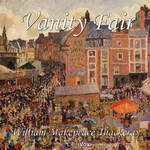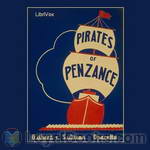|
Books Should Be Free Loyal Books Free Public Domain Audiobooks & eBook Downloads |
|
|
Books Should Be Free Loyal Books Free Public Domain Audiobooks & eBook Downloads |
|
Satires |
|---|
Book type:
Sort by:
View by:
|
By: Various | |
|---|---|
 Curiosities of Street Literature
Curiosities of Street Literature
This is a collection of broadsides from London. Broadsides are short, popular publications, a precursor to today's tabloid journalism. The collection contains sensationalist and sometimes comical stories about criminal conduct, love, the Royal Family, politics, as well as gallows' literature. Gallow's literature were often sold at the execution. As a collection these broadsides are a reminder of how important the printer was at this time -- it is surely no coincidence that the printers are printed at the end of every broadside, while the authors remain anonymous. - Summary by kathrinee | |
By: Virginia Woolf (1882-1941) | |
|---|---|
 The Voyage Out
The Voyage Out
The Voyage Out is the first novel by Virginia Woolf, published in 1915 by Duckworth; and published in the U.S. in 1920 by Doran. One of Woolf's wittiest social satires.Rachel Vinrace embarks for South America on her father's ship and is launched on a course of self-discovery in a kind of modern mythical voyage. The mismatched jumble of passengers provide Woolf with an opportunity to satirize Edwardian life. The novel introduces Clarissa Dalloway, the central character of Woolf's later novel, Mrs... | |
By: Voltaire (1694-1778) | |
|---|---|
 Zadig, or the Book of Fate
Zadig, or the Book of Fate
Zadig, ou La Destinée, (”Zadig, or The Book of Fate”) (1747) is a famous novel written by the French Enlightenment philosopher Voltaire. It tells the story of Zadig, a philosopher in ancient Babylonia. The author does not attempt any historical accuracy, and some of the problems Zadig faces are thinly disguised references to social and political problems of Voltaire’s own day. The book is philosophical in nature, and presents human life as in the hands of a destiny beyond human control. It is a story of religious and metaphysical orthodoxy, both of which Voltaire challenges with his presentation of the moral revolution taking place in Zadig himself... | |
 Zadig or The Book of Fate (Version 2)
Zadig or The Book of Fate (Version 2)
"there is no Evil under the Sun, but some Good proceeds from it:" -- this quote from this novel sums it up. One of Voltaire's most celebrated works, Zagig follows the plight of a young man, Zadig, as he embarks on matrimony. This tale is somewhat philosophical, suggesting that no matter how we act, we are confronted by bigotry, injustice and betrayal. Although set in Babylon, there is no attempt at historical accuracy. | |
By: W. S. Gilbert (1836-1911) | |
|---|---|
 Pinafore Picture Book: The Story Of H.M.S. Pinafore (Version 2)
Pinafore Picture Book: The Story Of H.M.S. Pinafore (Version 2)
Pinafore’s sublimely silly story is made even sillier by this 1908 story version of the 1878 Gilbert and Sullivan operetta. Gilbert, the author of the operetta’s lyrics, writes this version of the story with his tongue planted firmly in his cheek. Most adults and children will find this version vastly amusing. - Summary by David Wales | |
By: Ward Moore (1903-1978) | |
|---|---|
 Greener Than You Think
Greener Than You Think
Do remember reading a panic-mongering news story a while back about genetically engineered “Frankengrass” “escaping” from the golf course where it had been planted? That news story was foreshadowed decades previously in the form of prophetic fiction wherein a pushy salesman, a cash-strapped scientist, and a clump of crabgrass accidentally merge forces with apocalyptic consequences. A triple-genre combo of science fiction, horror, and satire, Greener Than You Think is a forgotten classic that resonates beautifully with modern times. This is a faithful reading of a 1947 first edition text. | |
By: Washington Irving (1783-1859) | |
|---|---|
 Knickerbocker's History of New York, Vol. 1
Knickerbocker's History of New York, Vol. 1
Washington Irving, an author, biographer, historian, and diplomat, completed his first major work, a satire of contemporary local history and politics entitled A History of New-York from the Beginning of the World to the End of the Dutch Dynasty, by Diedrich Knickerbocker in 1809. Prior to its publication, Irving started a promotional hoax (not unlike some modern-day publicity stunts?) by placing fake missing persons advertisements in local newspapers asking for help in locating Diedrich Knickerbocker... | |
 Letters of Jonathan Oldstyle, Gent.
Letters of Jonathan Oldstyle, Gent.
The Letters of Jonathan Oldstyle, Gent. (1824) is a compilation of eight humorous and observational letters written by American writer, Washington Irving, under the pseudonym, Jonathan Oldstyle. These eight letters and one additional were first published as a series of "Letters to the Editor" of the New York paper, The Morning Chronicle, between 1802 and 1803. In them Oldstyle skewered the local New York social scene on the topics of etiquette, marriage, fashion, and other particulars of human interaction... | |
By: William Blake (1757-1827) | |
|---|---|
 Marriage of Heaven and Hell
Marriage of Heaven and Hell
The work was composed between 1790 and 1793, in the period of radical foment and political conflict immediately after the French Revolution. The title is an ironic reference to Emanuel Swedenborg's theological work Heaven and Hell published in Latin 33 years earlier. Swedenborg is directly cited and criticized by Blake several places in the Marriage. Though Blake was influenced by his grand and mystical cosmic conception, Swedenborg's conventional moral structures and his Manichean view of good... | |
By: William Dean Howells (1837-1920) | |
|---|---|
 Indian Summer
Indian Summer
In his novel Indian Summer, William Dean Howells presents a mellow but realistic story that has the complete feel of that delightful time of the year, although the plot actually spans several seasons. The Indian summer aspect applies to a sophisticated gentleman, Theodore Colville, who has just entered his middle years as he returns to a scene, Florence, Italy, that played an important part in his early manhood. It was here twenty years earlier that he first fell in love, seemingly successfully until a sudden and harsh rejection... | |
By: William Hurrell Mallock (1849-1923) | |
|---|---|
 New Republic; or Culture, Faith and Philosophy in an English Country House
New Republic; or Culture, Faith and Philosophy in an English Country House
A group of upper class men and women gather together in an English country house to discuss their ideas for a utopia . The novel is a satire mocking most of the important figures at Oxford University at the time of publication, with regards to aestheticism and Hellenism. Some of the famous characters that are depicted are Violet Fane/Lady Mary Montgomery Currie , Thomas Huxley , William Money Hardinge , Thomas Carlyle , and Walter Pater . The latter is of particular interest, as his characterisation in this novel helped ruin his reputation as well as his career at Oxford University... | |
By: William Makepeace Thackeray (1811-1863) | |
|---|---|
 Vanity Fair
Vanity Fair
If you've enjoyed watching the 1998 BBC television miniseries, you'd probably want to renew your acquaintance with William Makepeace Thackeray's 1847 novel, Vanity Fair. However, if you're unfamiliar with what has been dubbed one of the Best 100 Books in English Literature, you certainly have a treat ahead. Miss Pinkerton's Academy in Chiswick Mall in London is where young ladies with ambitions of making a good marriage are sent by their socially aspiring middleclass parents. Two young ladies, Amelia Sedley and Rebecca (Becky) Sharpe are on their way home after completing their term at Miss Pinkerton's... | |
 The Fitz-Boodle Papers
The Fitz-Boodle Papers
| |
By: William S. Gilbert (1836-1911) | |
|---|---|
 The Pirates of Penzance
The Pirates of Penzance
The Pirates of Penzance; or, The Slave of Duty is a comic opera in two acts, with music by Arthur Sullivan and libretto by W. S. Gilbert. The story concerns Frederic, who, having completed his 21st year, is released from his apprenticeship to a band of tender-hearted pirates. He meets Mabel, the daughter of Major-General Stanley, and the two young people fall instantly in love. Frederic finds out, however, that he was born on 29 February, and so, technically, he only has a birthday each leap year... | |
By: William Wycherley (1641-1716) | |
|---|---|
 Country Wife
Country Wife
One of the most notorious Restoration comedies in existence, William Wycherley’s The Country Wife is a lively and riotous exploration of courtly and city life in the seventeenth century, which was rife with unremitting sexual intrigue and conquest. For the basis of his plot, Wycherley here borrows heavily from the work of Molière, but abandons the French master’s unity and economy by introducing several interlocking storylines and characters, all of them clamoring for attention amidst Wycherley’s hard-hitting colloquial dialogue and double entendres... | |